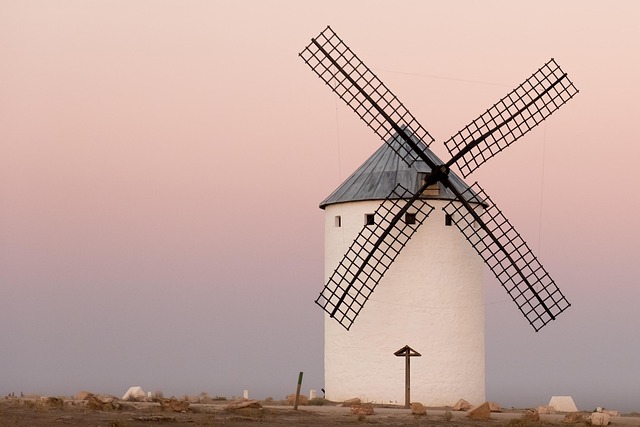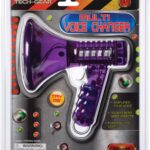FREE SHIPPING OVER $50
DIY Wind-Powered Car: Let the Wind Drive!
Imagine building a car that moves without batteries, fuel, or engines—just by harnessing the power of the wind. Sound too good to be true? Think again! With a few simple materials and a touch of creativity, you can build your own DIY Wind-Powered Car at home. It’s a fun, educational, and eco-friendly project that introduces kids and curious minds to the exciting world of renewable energy, physics, and engineering.
Let’s dive into the science behind it, how to make one, and why it’s an awesome activity for classrooms, science fairs, or a weekend with the family.

Why a Wind-Powered Car?
We live in a world that increasingly values sustainability. Teaching children and students about clean energy sources isn’t just important—it’s necessary. Wind energy is one of the most promising forms of renewable power. Wind turbines generate electricity across the globe, but this project brings that concept to a smaller, more playful scale.
By building a miniature wind-powered car, learners can:
- Understand how wind can be converted into motion
- Learn about energy transfer and Newton’s Laws of Motion
- Apply problem-solving and engineering skills
- Explore eco-friendly transportation alternatives
What You’ll Need
To build your own wind-powered car, gather the following simple materials:
- 4 plastic bottle caps (for wheels)
- 2 wooden skewers or straws (for axles)
- 1 plastic bottle or cardboard rectangle (for the car body)
- 1 paper or plastic sheet (for the sail)
- Tape or hot glue
- Scissors
- A fan or your own breath (to supply the wind!)
- Optional: drinking straws, rubber bands, bottle tops, LEGO parts, or any other upcycled materials
How to Build It – Step by Step
Step 1: Create the Base
Cut a rectangular piece of cardboard or use the body of a plastic bottle to form the base of your car. This will act as the chassis of your wind-powered vehicle.
Step 2: Make the Axles and Wheels
Poke holes into the center of your 4 bottle caps to act as wheels. Then slide wooden skewers or straws through the holes in the car body to serve as axles. Attach a wheel on each end of the axles with glue or rubber bands to hold them in place.
💡 Make sure the wheels can rotate freely—this is crucial for smooth movement!
Step 3: Add the Sail
Cut a rectangular piece of paper or plastic to serve as the sail. Tape or glue the sail to a vertical stick, straw, or pencil, then attach it to the center of your car’s body. The sail will catch the wind and drive the car forward.
Step 4: Test Your Wind-Powered Car
Place the car on a smooth, flat surface. Use a fan or blow on the sail to see it move. Try adjusting the angle of the sail to change the direction or speed. You’ve just created your own wind-powered machine!
The Science Behind It
Newton’s Laws in Action
Your car demonstrates Newton’s Third Law of Motion: For every action, there is an equal and opposite reaction. When wind pushes against the sail, the sail pushes back against the air—and the car moves forward.
Energy Transfer
The energy from moving air (wind) is transferred to the sail. That energy turns into kinetic energy (motion), propelling the car. This is the same principle that drives full-sized sailboats across oceans and land yachts across salt flats.
Friction and Efficiency
Reducing friction between the axles and wheels helps the car move faster and farther. Lightweight materials and aerodynamic design also make the car more efficient.
Try These Fun Variations!
Want to take your wind-powered car to the next level? Here are some creative ways to modify and improve your design:
- Bigger Sail = More Speed? Try using a larger sail to capture more wind.
- Different Materials: Try building the body out of LEGO, foam board, or recycled plastic.
- Steering Control: Can you design a version that turns or goes straight more consistently?
- Two-Wheel vs. Four-Wheel Drive: Try different numbers of wheels or wider axles.
- Racing Challenge: Build multiple cars and race them with friends using a fan or natural breeze.
🧠 Each variation provides an opportunity to ask scientific questions and run your own experiments.
Real-Life Connections
Wind-powered transportation isn’t just for the classroom. Real-world examples include:
- Sailboats and yachts that navigate oceans using wind power
- Wind-powered land yachts used in sports and competitions
- Wind energy turbines that generate electricity in many countries
- Future concepts of wind-powered cars and kitesurfing transport
Your small car is a miniature version of these real-life wind innovations!
What Kids Learn from This Project
This project encourages kids (and adults!) to think like engineers and scientists. Here’s what they’ll practice:
- Critical thinking – How can you make the car go faster? Straighter?
- Creative problem-solving – Using different materials or designs to improve performance.
- Teamwork – Great for classroom or group settings.
- Understanding green energy – Learning that we can harness natural resources like wind for practical uses.
Teaching Tips and STEM Integration
Teachers can integrate this activity into lessons about:
- Forces and motion
- Renewable energy
- Engineering design process
- Scientific method (hypothesis, testing, iteration)
Encourage students to record their design process, results, and improvements. Let them present their cars and explain how they work—this boosts communication and STEM confidence.
Conclusion: Let the Wind Take the Wheel
The DIY Wind-Powered Car is more than just a fun project—it’s a hands-on introduction to physics, engineering, and environmental science. Whether you’re a parent looking for an engaging weekend activity, a teacher crafting a lesson plan, or a student building a science fair project, this simple design holds a powerful lesson: clean energy can move us forward.
So, grab some recycled materials, catch the wind, and let your imagination drive. Who knows? Today’s wind-powered car might inspire tomorrow’s eco-friendly invention.



